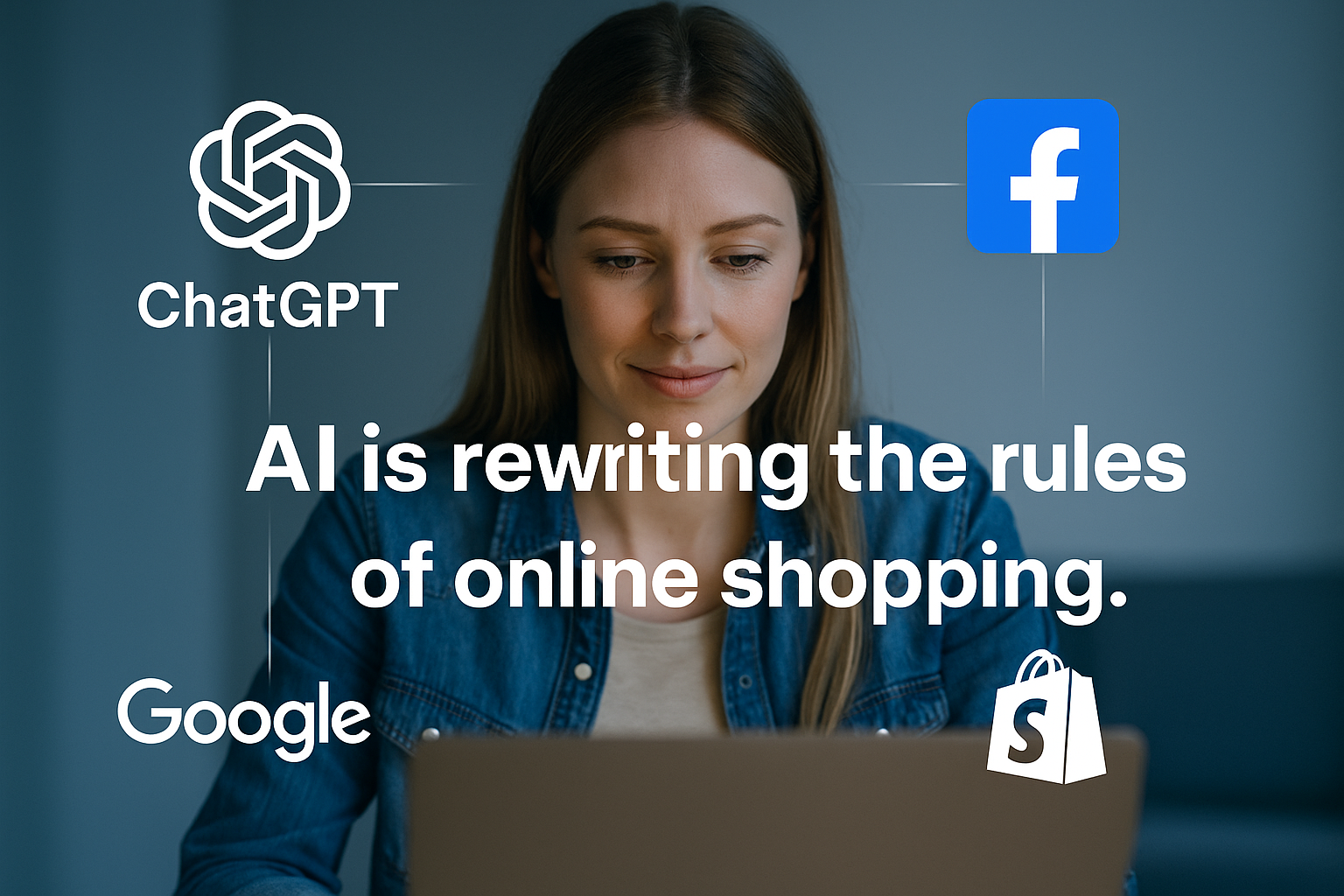OpenAI + Shopify: What the ChatGPT Integration Means for Digital Commerce
OpenAI’s recent integration with Shopify marks a pivotal moment in the evolution of AI-driven eCommerce. With ChatGPT now acting as a personalized shopping assistant, consumers can discover and buy products directly through conversational AI—without ever setting foot on a traditional eCommerce site.
According to eMarketer, this integration enables Shopify merchants to tap into ChatGPT’s browsing capabilities to showcase products directly in the chat interface. As a result, users can ask for recommendations (“I need a birthday gift for my sister under $50”), and ChatGPT will return curated product suggestions from Shopify merchants. With seamless add-to-cart and checkout functions on the horizon, the line between browsing and buying has officially blurred.
But what does this mean for platforms that have already leaned heavily into social commerce—like Instagram, Facebook, Pinterest, TikTok, and Google’s Product Listing Ads? Let’s break it down.
How This Impacts Digital and Social Media Shopping Platforms
1. Instagram & Facebook Shops (Meta)
Meta has invested heavily in building out Shops across Instagram and Facebook, turning user feeds into full-funnel purchasing platforms. The Shopify-ChatGPT integration introduces a new competitor to this ecosystem: an AI-powered discovery engine. While social algorithms rely on behavioral data and engagement signals, ChatGPT responds directly to a user’s intent.
Impact:
-
Brands may prioritize Shopify integrations over Meta Shops if ChatGPT starts converting better with higher intent audiences.
-
Meta may double down on its own AI integrations to keep users within its apps (think: Meta AI with embedded commerce).
-
Expect a push toward AI-powered DMs and chatbot enhancements in Meta Business Suite.
2. Pinterest
Pinterest thrives on visual discovery and is often a top-of-funnel platform for eCommerce brands. However, users still need to leave the platform to make purchases. With ChatGPT offering curated product suggestions and integrated purchasing, it could bypass Pinterest’s visual discovery altogether.
Impact:
-
Pinterest will need to enhance its predictive search and shopping ads to compete with conversational commerce.
-
Integration opportunities may arise—Shopify sellers could use Pinterest Pins as visual inputs to train AI recommendations.
3. TikTok Shop
TikTok’s shopping feature leverages influencer-led product discovery with viral potential. It’s entertaining and impulse-driven, but lacks the precision of a user typing an explicit need into ChatGPT.
Impact:
-
TikTok Shops will likely continue to dominate impulse buys, but ChatGPT may win on practical or giftable items.
-
Expect more TikTok content creators to experiment with OpenAI plugins to offer “AI-curated” gift guides and product drops.
4. Google Shopping / Product Listing Ads
This is perhaps the most directly impacted channel. Google Shopping thrives on intent-based searches—just like ChatGPT. But instead of presenting a grid of options, ChatGPT filters and recommends only the most relevant items.
Impact:
-
Brands may shift some Google Shopping budget toward optimizing for AI discovery (e.g., clearer product titles, enhanced descriptions).
-
SEO for product feeds may expand to include “AI readiness” (think: how well products surface in ChatGPT search results).
-
Google will likely respond by enhancing Bard’s commerce capabilities and integrating deeper with Google Merchant Center.
What Should Marketers and Brands Do?
1. Optimize Product Listings for AI
Ensure your Shopify product data is clean, keyword-rich, and structured so ChatGPT can accurately surface and recommend your products.
2. Diversify Discovery Channels
Rather than rely solely on social or search, embrace a multichannel strategy that includes both AI and visual platforms. ChatGPT may not replace Instagram, but it could become your best digital salesperson.
3. Prepare for Conversational Commerce
Consumers are already using voice search and smart assistants to shop. Now that AI chat tools can complete the journey, brands should think about how their customer journey fits into this new paradigm.
4. Leverage Social Proof Where AI Lags
While ChatGPT is smart, it doesn’t (yet) show customer reviews, real-time trends, or influencer buzz. This is where social media still shines. Pair AI-based recommendations with social proof for the best results.
OpenAI’s Shopify integration: More Than a New Tech Feature
OpenAI’s Shopify integration is a shift in how consumers discover and buy products. As AI becomes a central touchpoint in the shopping journey, brands need to rethink how they show up—not just on Instagram or Google—but in the conversations people are having with AI.
In the world of eCommerce, your next customer might not find you on a scroll or a search—but through a sentence typed into ChatGPT.
Interested in learning more about AI? Take a deep dive into The Artificial Intelligence Revolution: AI Powered Content Creation.


